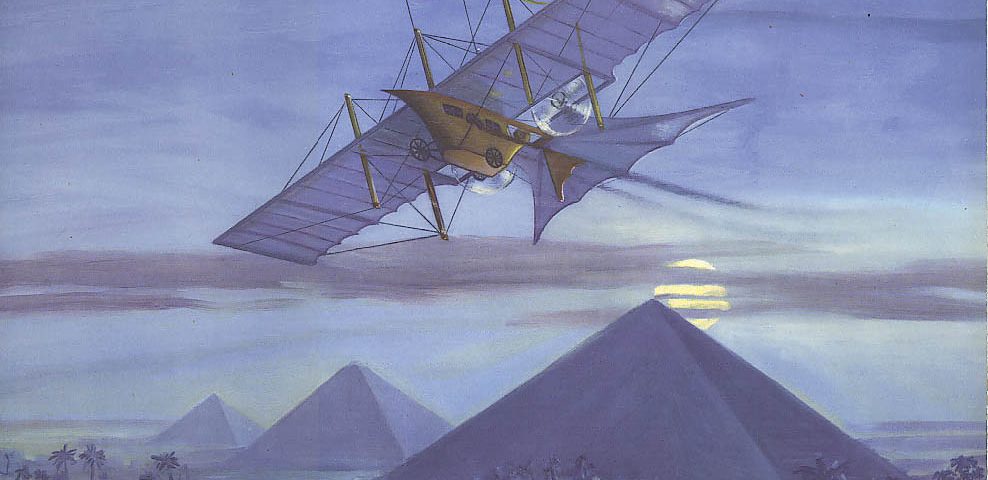
10 More *Accidental* Discoveries and Inventions?! (Part 2 of 2)
February 18, 2024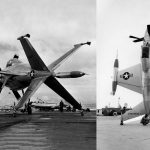
20 of the Worst Aircraft Designs of All Time?
February 22, 2024“God denied to men the faculty of flight so that they might lead a quiet and tranquil life, for if they knew how to fly they would always be in perpetual danger.” – Juan Caramuel y Lobkovitz
The history of human flight is a complicated one, full of trial and error, tragedy and triumph. Mankind has dreamt of soaring with the birds since before recorded history. In Greek Mythology, after Daedalus made his son a pair of wax wings, Icarus tragically flew too close to the sun, causing the flimsy wings to fail him. Here are 15 *failed* attempts at manned flight, prior to the Wright Brothers success with the first airplane in 1903…

1. 852-875 CE – Abbas Ibn Firnas (Córdoba, Spain)
In the year 852, a good one thousand years *before* Otto Lilienthal’s gliders, a Muslim mathematician named Abbas Ibn Firnas (or it was a guy called “Armen Firman” who then inspired Ibn Firnas, but the history books are a bit sketchy regarding this period), made a giant leap for mankind! This brave inventor (Abbas or Armen) climbed to the top of the tallest tower in Córdoba, Spain, with a giant cloak of wooden struts covered in feathers, and jumped off!
The poor guy immediately plummeted to the ground! However, much to everyone’s surprise, his makeshift glider managed to catch the air just enough to slow his fall, like a poorly designed parachute. He still broke nearly every bone in his body, but at least he lived to tell the tale. After recovering from his close call with gravity, the determined scholar spent a couple decades studying the flights of birds, and trying to figure out what went wrong.
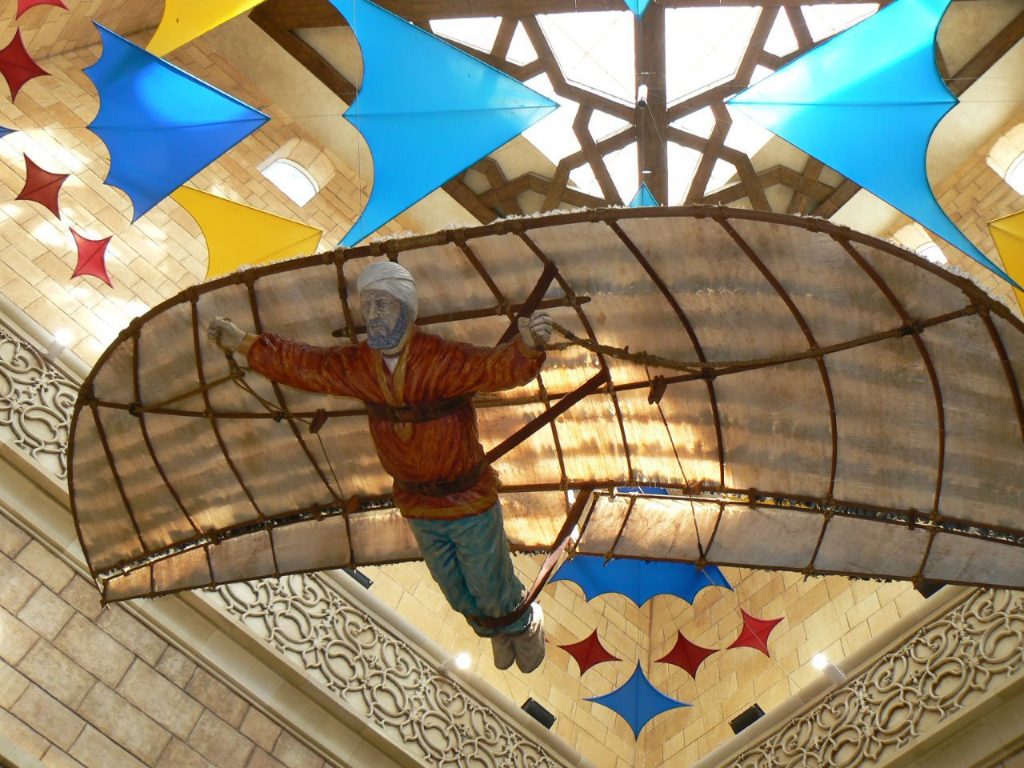
Then, in 875 CE / AD, at the spry young age of 65, Abbas Ibn Firnas was ready to debut his latest invention: a large glider made of wood, silk, and vulture feathers! With a crowd of curious onlookers egging him on, the Islamic daredevil made his way to a nearby cliff, got a running start, and took a leap of faith…
This time, instead of falling immediately to his death, he glided through the air, soaring like a bird! Unfortunately, it was at that moment he realized that he didn’t have a way to maneuver, or more importantly – land – causing him to nose-dive into the ground like an oversized paper airplane! Luckily for Abbas, he was able to limp away from his second attempt at flight, but due to his back pain, swore to give it up for good.
A somewhat similar story occurred sometime around the year 1000, when Al-Djawhari, a Turkish scholar, attempted to fly from the top of a mosque in Arabia, announcing: “O People! No one has made this discovery before. Now I will fly before your very eyes. The most important thing on Earth is to fly to the skies. That I will do now.”
Spoilers: he didn’t.
2. 1390? – The Legend of Wan-Hu (Ming Dynasty China)
Centuries after the *accidental* discovery of gunpowder by Ancient Chinese Alchemists (who were trying to create an elixir of life), Chinese rockets were being used on the battlefield against the Mongols. According to a 16th century legend: in the year 1390-ish (during the Ming Dynasty), a Chinese official named Wan-Hu wanted to visit the moon, nearly 600 years before NASA’s Apollo missions, and came up with an elaborate plan to achieve this goal…

What could go wrong?
While he may have been ahead of his time, there were… A LOT of variables that Wan-Hu hadn’t really considered. Despite the naysayers, Wan grabbed a wicker chair, strapped 47 rockets to it, and planned to use a set of kites to help steer his trajectory! After trying to reason with him, his servants lit the fuses on the explosives and immediately dove for cover. Needless to say, when the smoke cleared, there was no sign of Wan-Hu, or his trusty rocket chair…
Both Abbas Ibn Firnas and Wan-Hu now have craters on the moon named after them.
3. 1485 – DaVinci’s “Ornithopter” (Italy / France)
Leonardo Da Vinci wasn’t just an Italian Renaissance painter, he was a genius scientist, and an avid inventor. Of his countless pursuits, Da Vinci was *obsessed* with the concept of human-powered flight. In fact, more than 500 sketches and 35,000 words from his scatter-brained notes were dedicated to a number of “flying machines”!
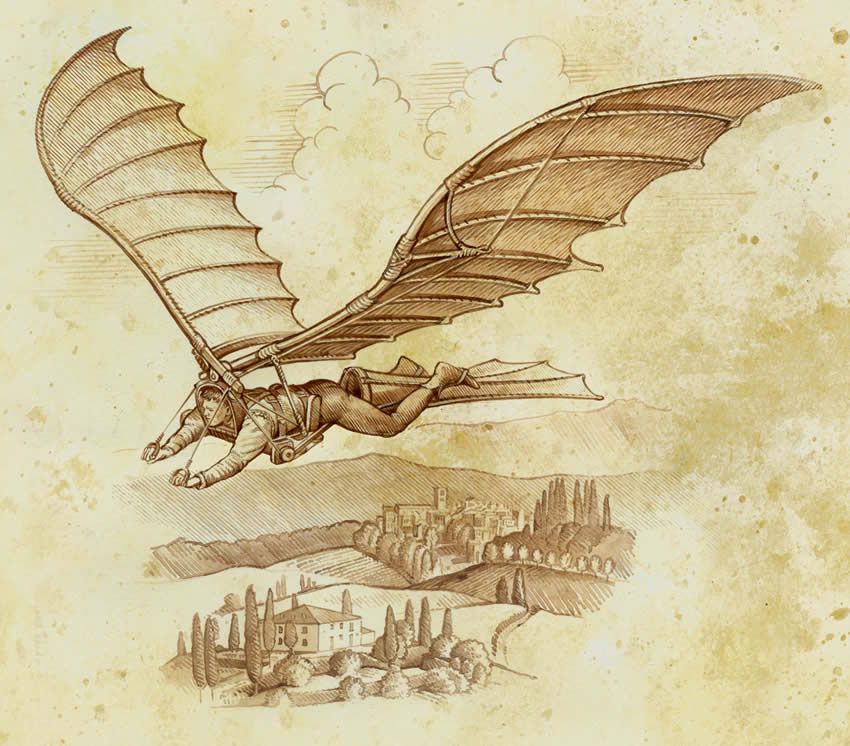
Leonardo created a design for a glider (whose design actually inspired the look of Bob Kane and Bill Finger’s “Batman” comic books!), invented the concept of a parachute, and even came up with something called an “Ornithopter”, that later inspired the very real invention of the helicopter in the 1940’s! Despite having such thorough schematics for so many brilliant prototypes, he never had the chance (or funding) to put these early aviation prototypes into production.
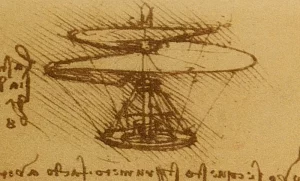
Da Vinci was so ahead of his time, he even created a “Medieval Robot” in 1495!
4. 1507 – The Ballad of John Damian (Scotland)
John Damian de Falcuis was an Italian alchemist who became an abbot in the court of King James IV of Scotland. In 1507, after numerous failures as an alchemist, John Damian attempted to prove himself – by covering himself in chicken feathers and attempting to soar off the battlements of Stirling Castle?!
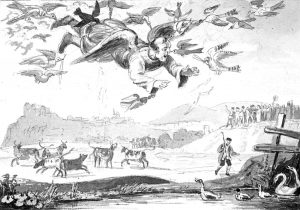
Instead of soaring through the air, he instantly crashed to the ground and broke his thigh bone. He quickly became the laughing-stock of the town, and was parodied by William Dunbar, who wrote a satirical poem about the whole affair: “A Ballad of the False Friar of Tongland, How He Fell in the Mire Flying to Turkey”! There are dozens of similar stories throughout the 16th century, but John Damian was at least lucky enough to walk away from his attempt, while others like João Torto (Portugal, 1540) weren’t so lucky…

5. 1678 / 1742 – Besnier the Locksmith (France)
Another (failed) attempt at flight occurred in 1678, when another optimistic “inventor”, a French locksmith named Besnier, created an absolutely ridiculous contraption that used two wooden paddles strapped to each of his limbs. Besnier would frantically flap his arms and legs to try and fly like a bird! Although it’s said to have “worked” (sort of?), it proved to be cumbersome, dangerous, and completely impractical.
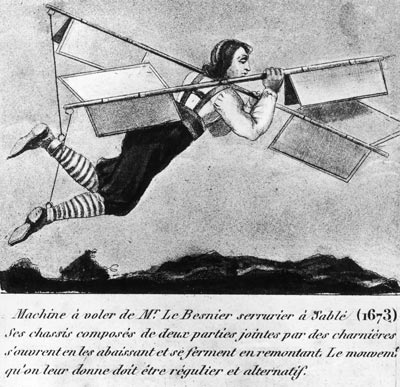
Years later, an eccentric French nobleman, Marquis de Bacqueville, had a similar idea to Besnier the Locksmith, and attempted to fly across the river Seines in Paris, France, on March 19th, 1742. Using four paddle-like wings attached to his arms and legs, he dove off a nearby building attempting to soar like a bird! Furiously flapping his “wings”, the kooky inventor miraculously managed to briefly catch a gust of wind before losing control and nose-diving into a barge and breaking his leg!
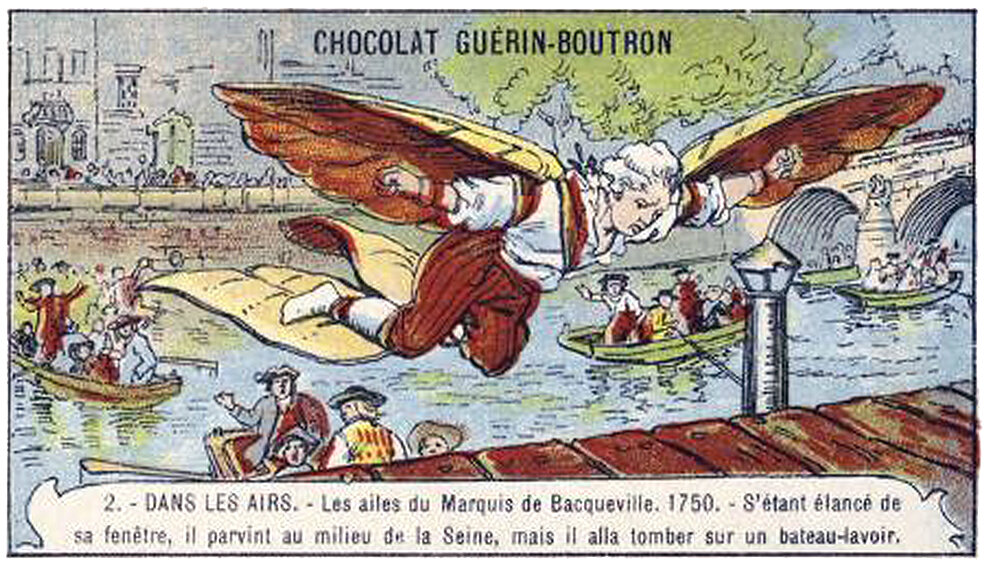
6. 1772 – Pierre Desforges and the “Flying Gondola”?! (France)
Unlike all the previous failed attempts at human flight, Abbé Pierre Desforges, decided to not use himself as a human guinea pig. Instead the eccentric French clergyman decided to hire peasants to try out his flying inventions for him! However, after covering some poor shmuck in feathers and telling him to jump off a tower, the volunteer up and quit, refusing to commit suicide.

Frustrated, Pierre went back to the drawing board and a couple years later, in 1772, he was ready to test out his latest and greatest (?) invention: a Flying… Gondola?! After attaching a 20-foot wingspan to a 6-foot gondola, Abbé got in this absurd contraption and pushed off from the top of his church’s lookout tower!
As expected, by pretty much everyone else, the “Flying Gondola” plunged to the ground like a boulder and smashed to pieces. Somehow though, against all odds, Abbé Pierre Desforges managed to walk away with nothing more than a broken arm! Just 10 years later, in 1782, the Montgolfier Brothers launched the world’s first hot air balloon!
7. 1848 / 1874 – Steam-Powered Dreams (England / France)
Interest in aviation skyrocketed (no pun intended) in the 19th Century, following the introduction of steam engines in 1811, as well as Sir George Cayley’s aerodynamic glider research and his innovative use of a plane propeller in 1843.
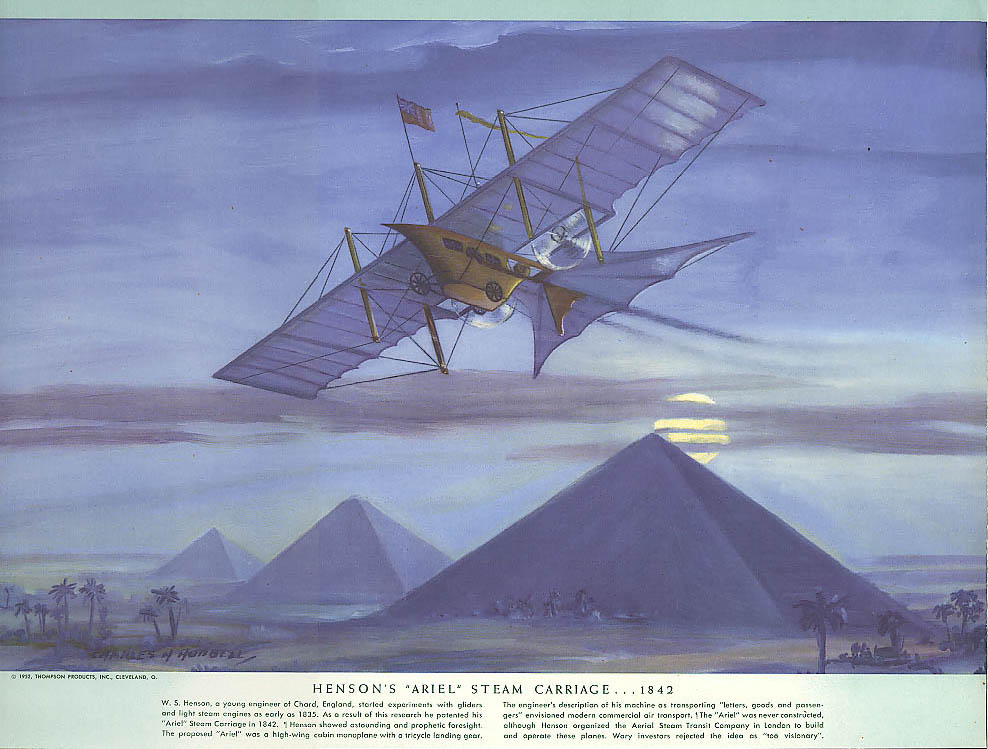
Then after years of planning, two British inventors, William Samuel Henson and John Stringfellow, created a small (unmanned) prototype of their proposed “Aerial Steam Carriage” in a warehouse in England, in 1848. They hoped to eventually have a test flight across the Nile in Egypt, but unfortunately the venture never quite got off the ground (pun intended), when their investors pulled funding. Still, the promotional imagery of “Henson’s Ariel” went on to inspire an entire generation of aviation enthusiasts, including French aviator, Jean Marie Le Bris, who created the first prototype aircraft to be photographed in 1868: “The Albatross” – which made a 200 meter long glide before being damaged beyond repair as it crashed to the ground…

“The Albatross” – before its fateful crash, 1868
Yet another early French aviator, Félix du Temple de la Croix – a Naval Officer and veteran of the Crimean War (aka “World War Zero”), also decided to throw his hat in the ring and tried designing his own ‘Aeroplane’. Félix du Temple set about building his aluminum, steam-powered “Monoplane” – weighing just 180 pounds (before the pilot), with a wingspan of 43 feet, and a single wooden propeller!

During it’s first “test flight” in 1874, Du Temple’s Monoplane didn’t quite fly, so much as hop in place. The Monoplane “staggered briefly into the air” according to the magazine, Flight International. Still, after running it down an inclined ramp, the “aircraft” glided for a short period of time and landed without falling apart, which earned it’s place as *technically* the first “successful powered flight in human history”, despite not being able to maneuver… or take off on it’s own.
8. 1884 – Mozhaysky’s “Firebird” (Russia)
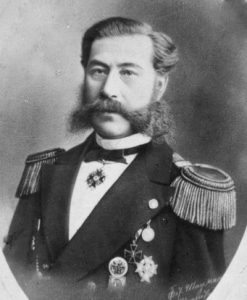
Aleksandr Fyodorovich Mozhaysky was a Russian Naval Officer who (like Félix du Temple) was another seafarer who became entranced with the dream of flight. Mozhaysky spent several years throughout the 1860’s studying birds, and experimenting with kites. Some of these wacky experiments included being lifted into the air, attached to a giant kite, while being dragged by a horse-drawn carriage! Many such stunts ended in injury…
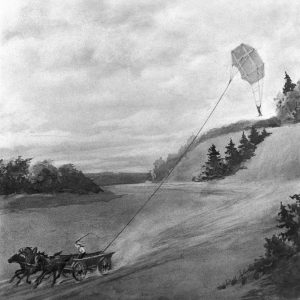
Aleksandr demonstrated his first miniature wind-up plane, “Letunya” (The Flying Girl), in St. Petersburg, in 1876. The Russian inventor was determined to make a large scale version, but lacked the funding to make it a reality. The following year, Russia was at war with the Ottoman Empire (again), so Alex saw a chance to pitch his crazy idea to the Czar, and began drawing up blueprints.
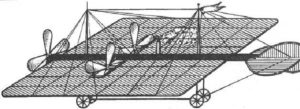
“I sought to be useful to the Fatherland and began developing my project, leaving my post, as well as another lucrative career opportunity. At first, I survived by spending modest cash savings, then began acquiring debts, selling and pawning anything of value, even watches and engagement rings… And only when things got really bad, when I was destitute and didn’t even own clothes befitting an officer, did I begin asking the government not for an award, but a loaf of bread…” Although the Russian government initially turned the project down, they eventually relented and agreed to help him finance the project. Finally, in 1884, after several years of rigorous trial and error, Rear Admiral Mozhaysky was ready to premiere his magnum opus: “Zhar-Ptitsa” (The Firebird)!

This waffle-shaped “airplane” was basically a wooden boat on wheels, with rectangular fabric wings, and three propellers, powered by 2 steam engines, giving the rudimentary craft a whopping 30 horsepower! The Firebird was given its first test run that fall, in the fields outside of St. Petersburg, where they built a large wooden launch ramp. At 57 years old, Aleksandr was too old to pilot the thing, so his lead mechanic hopped into the cockpit. The monoplane chugged down the ramp and took off into the air! The Firebird soared for about 100 meters… before it started to lose altitude… and crumpled into the ground on impact.
Despite losing a wing, and not having enough power for a sustained flight, the Russian Firebird is regarded by many to be the world’s first “airplane”. Mozhaysky is still regarded as a national hero in Russia for his aeronautics and propulsion research. During the Cold War, a Soviet supersonic stealth bomber was named after him.
9. 1889-1894: Maxim’s “Flying Machine” (England)
British inventor, Sir Hiram Maxim, creator of the first machine gun (the “Maxim Gun”, 1884), and disputed inventor of the light bulb (Thomas Edison took all the credit, long story), was also another one of the earliest proponents of “powered human flight”. He approached the problem scientifically, conducting a series of wind-tunnel experiments before completing his design. In 1889, Maxim began construction on his “Flying Machine” – a massive *3.5 ton*, 40-foot long, behemoth with a (multi-tiered) wingspan of 110 feet! This colossal plane was powered by two light-weight, 360-horsepower steam engines connected to two large pine-wood propellers!
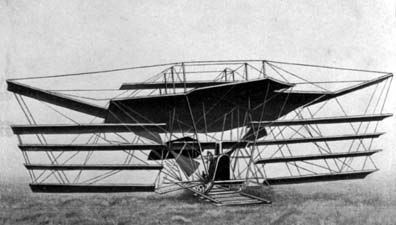
During these test runs, in order to keep the expensive prototype from flying away, the ‘Flying Machine’ was tethered to a 1,800-foot railroad track. In 1884, the beast of an aircraft managed to produce enough lift to take off, but ended up ripping up the wooden track in the process! Maxim managed to abort the test before disaster struck. Soon after, despite his initial success, Maxim’s ADHD kicked in again, and he abandoned the project for good, moving on to design fair rides for amusement parks instead. Today he’s credited with over 270 patents!
10. 1897 – Avion III (France)
After developing V8 engines, and improving on Alexander Graham Bell’s telephone design, French inventor, Clément Ader turned his attention to the problem of aviation. After securing government funding from the French Office of War, Ader constructed his third prototype, The Avion III. This steam-powered “aircraft” was shaped like a bat, made of linen, with two propellers, had a 52-foot wingspan, and weighed 880 pounds!
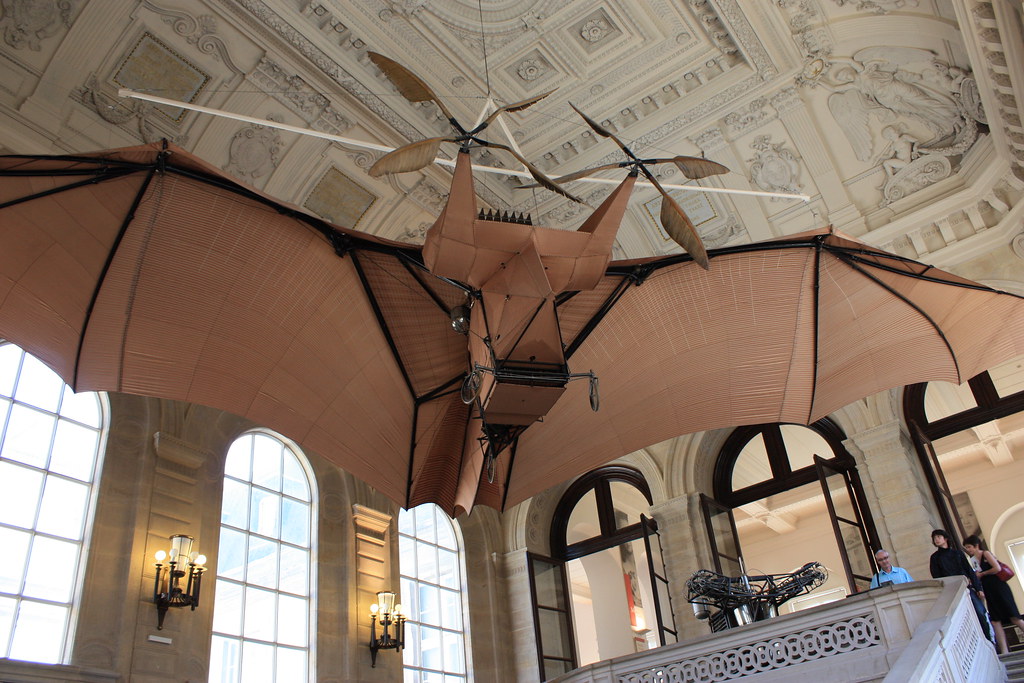
In 1897, the French military gave Clément’s Avion a test run, but was unimpressed by the results. At most, the bizarre craft could barely clear a few inches off the ground, and needed a gust of wind to get going. Needless to say, funding was cut, and the project was cancelled.
11. 1898-1906: Alberto Santos-Dumont’s Airships (Brazil / France)
Brazilian inventor and heir to an immense fortune, as the son of a wealthy coffee magnate, Alberto Santos-Dumont is often disputed as the first person to demonstrate the feasibility of a practical heavier-than-air craft. Building off of the success of Henri Giffard’s “Steam-Powered Airship” from 1852, Alberto moved to France and began experimenting with and designing his own hot air balloons and blimps in 1898. In 1901, Santos-Dumont’s Airship No. 6 won a dirigible competition in Paris, breaking an air speed speed record – topping out at an “unfathomable” 25 miles-per-hour, as it rounded the Eiffel Tower! After winning 100,000 francs, he gave half of the prize money to his technicians and donated the rest to the city’s poor.
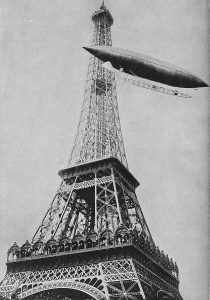
After an unfortunate accident in 1902, when his airship was nearly blown out to sea and belly flopped into the water near Monte Carlo, Alberto returned to Brazil where he continued to work on perfecting his blimps, and eventually turned his attention to making a powered heavier-than-air craft. His first attempt was an unmanned helicopter prototype (nearly 40 years before Igor Sikorsky’s “Hoverfly”), but he quickly abandoned the project when he realized that the same principles could be used to create an ‘Aeroplane’!
Alberto Santos-Dumont designed the 14-bis: “Bird of Prey”, a Hargrave-cell biplane, constructed in a “canard configuration”, built from bamboo, pine, wicker, aluminum, and Japanese silk, all powered powered by a rear-mounted 37-kilowatt / 50-horsepower Antoinette liquid-cooled, fuel-injected V8 engine! Unfortunately, his first working airplane prototype wasn’t completed until 1906, a full three years after the Wright Brothers…
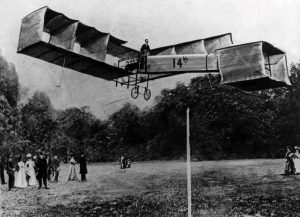
Santos-Dumont continued to innovate and champion aviation pursuits until late in his life, and is considered a national hero by the people of Brazil to this day.
12. 1901: Gustave Whitehead’s “Aeroplane” Claims (Bridgeport, Connecticut – USA)
Gustave Whitehead was a German-American immigrant and aviation enthusiast who has since become the subject of controversy and urban legends for well over a century. After failing to create a workable glider in Boston in 1897, he began working on a series of attempts at powered flight, starting in Pittsburg in 1899. He claimed to have flown his No. 21 monoplane down Pine Street, in Bridgeport, Connecticut on August 14th, 1901 (two whole years before the Wright Brothers’ historic flight), but all evidence points to his bird-like bamboo craft being aerodynamically unsound.
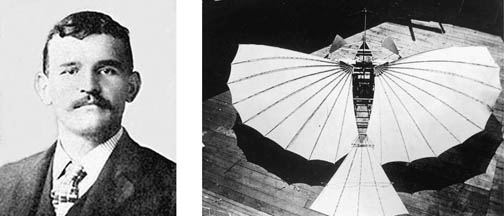
13. 1902-1903 – Richard Pearse’s “Monoplane” (New Zealand)
Another often disputed claim is that of Richard Pearse’s “Monoplane” flights in New Zealand, between 1902 and early 1903 (several months before The Wright Bros). Although there was no official record of it from that time period, dozens of witnesses later supported the claim that they had seen Pearse’s low-budget rectangular “aircraft” in action. Decades later, in the 1970’s, a replica was constructed that proved it was possible to get airborne when being dragged behind a horse, but crashed and immediately fell to pieces during a clumsy landing.
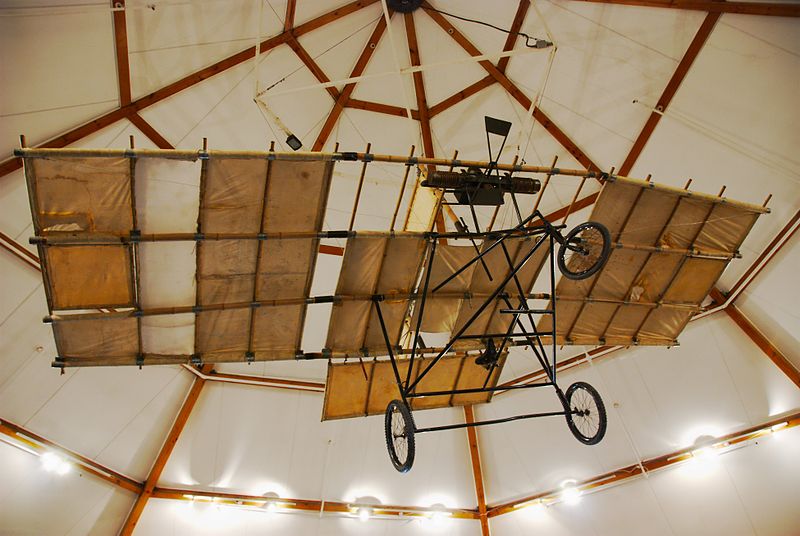
14. August-November, 1903 – Karl Jatho’s “Biplane” and “Triplane” (Germany)
Just months before the Wright Flyer took off in December of 1903, Karl Jatho, a German inventor began testing two of his own prototype ‘Aeroplanes’: first a Triplane, followed by a Biplane, outside of Hanover, Germany – from August to November, 1903. Jatho’s first “flight” was only 59 feet at an altitude of just 3 feet. 30 years later, he tried to claim that he had been the “first in flight”, but according to records at the time, his aircraft designs lacked control mechanisms.
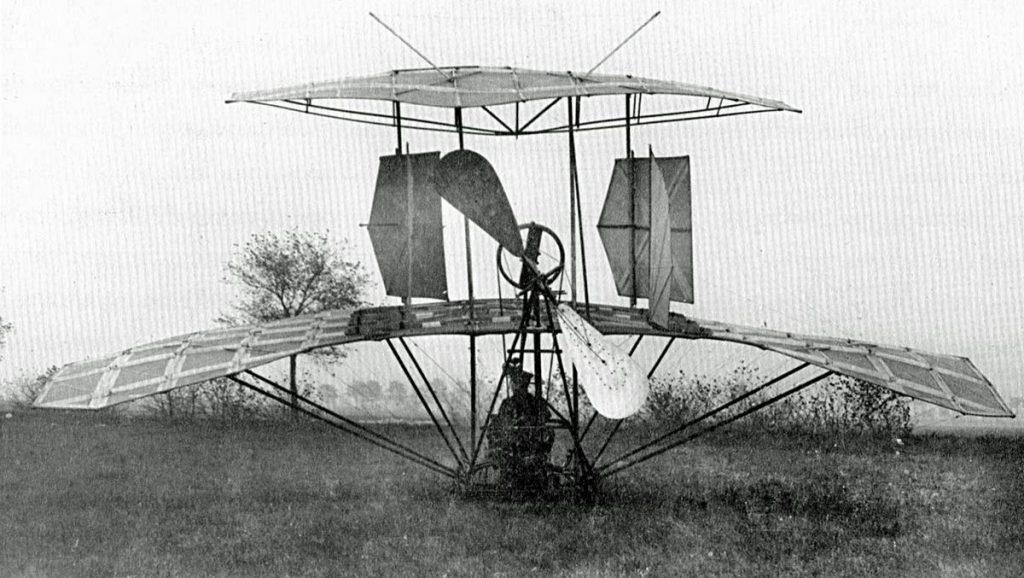
15. October-December, 1903 – The Langley “Aerodrome” (Quantico, Virginia – USA)
Samuel Langley, the Secretary of the Smithsonian Institute, was already an accomplished academic and astronomer when he began to seriously pursue aviation in 1887. The wealthy inventor had enough initial success with his miniature plane models to earn himself a $50,000 grant from the US Army to develop a piloted craft. With the help of his engineer and test-pilot, Charles M. Manly, Langley began development on his latest and greatest invention, “The Aerodrome”!
The Langley Aerodrome was a steam-powered craft, with wire-braced, tandem, dihedral wings, a cruciform tail, and sported a 52-horsepower engine! It was designed to be launched from a catapult aboard Langley’s houseboat, on the Potomac River, near Quantico, Virginia. On October 7th, 1903, Charles Manly climbed aboard the Aerodrome for its first test flight. The aircraft lunged forward… and immediately dove head-first into the river! The San Francisco Call reported: “LANGLEY’S FLYING MACHINE FAILS COMPLETELY!”
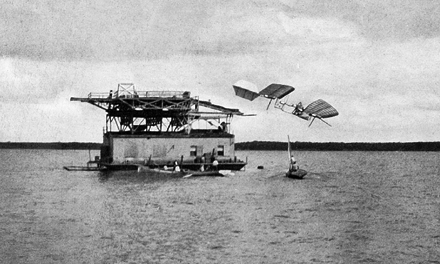
whomp whomp
A second attempt was made on December 8th, 1903 (just as the Wright Bros were prepping for their own historic flight). This time, with a crowd of reporters and Smithsonian representatives, it seemed as though Charles Manly would become the first person to fly. Instead, at about 4:45PM, the Aerodrome was catapulted into the breeze where it proceeded to crumple apart in mid-air! The failed contraption flipped backward before plunging into the icy waters below…
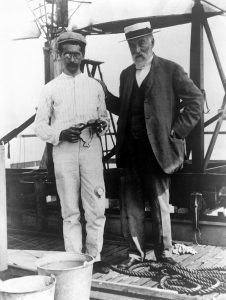
The heavy machine disappeared beneath the freezing river, dragging Manly with it! His flight jacket had snagged on the wreckage, but luckily he managed to pull himself free of the sinking plane in the nick of time and swam to the surface. Once he was pulled aboard the houseboat, he was wrapped in a dozen or so blankets, and slammed down a shot of whiskey. Through chattering teeth, he slung a solid paragraph of curse words at Langley for nearly killing him.
9 days later, on December 14th, 1903, around 10:34 AM, Orville and Wilbur Wright made history, performing “the first manned, powered, heavier-than-air, controlled flight” at Kill Devil Hills, in Kitty Hawk, North Carolina! The world’s first (official) airplane – made of red spruce wood, with wings of muslin fabric, and a quaint 12-horsepower motor – lifted off for just 12 seconds, and travelled 120 feet!
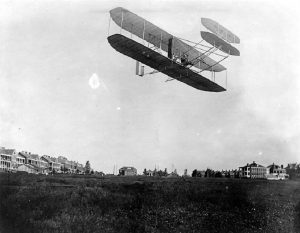
The Wright Flyer III, 1905
For more on all that though, read my book, “Epic Fails – The Wright Brothers: Nose-Diving Into History” , or click here for 25 Epic Aviation Milestones!
– Erik Slader

Sources:
https://en.wikipedia.org/wiki/Ader_Avion_III
https://en.wikipedia.org/wiki/Karl_Jatho
https://en.wikipedia.org/wiki/Langley_Aerodrome
https://en.wikipedia.org/wiki/Richard_Pearse#Flights
https://en.wikipedia.org/wiki/Alberto_Santos-Dumont#Airships
https://en.wikipedia.org/wiki/Du_Temple_Monoplane
http://www.aviation-history.com/early/maxim.htm
https://www.nps.gov/wrbr/learn/historyculture/thefirstflight.htm
https://www.britannica.com/biography/Alberto-Santos-Dumont
https://www.thehistoryofart.org/leonardo-da-vinci/ornithopter/
https://en.wikipedia.org/wiki/John_Damian
https://airandspace.si.edu/stories/editorial/flight-claims-gustave-whitehead
https://www.onverticality.com/blog/marques-de-bacqueville-leap-of-faith
https://www.britannica.com/biography/Aleksandr-Fyodorovich-Mozhaysky
https://science.howstuffworks.com/transport/flight/classic/ten-bungled-flight-attempt.htm

